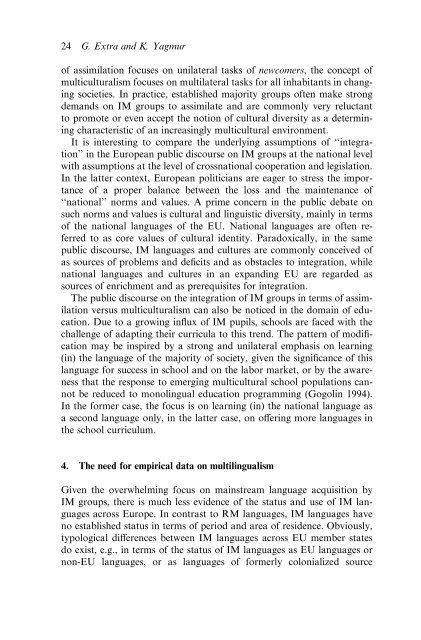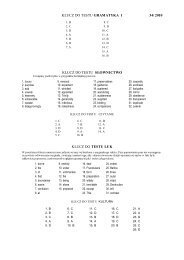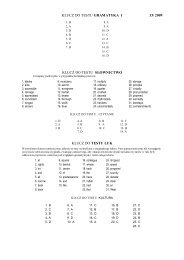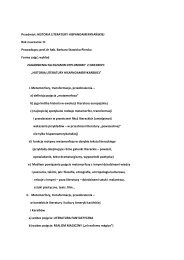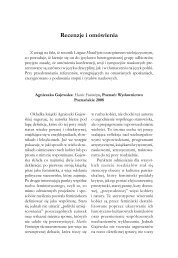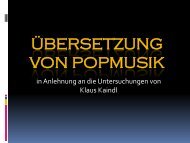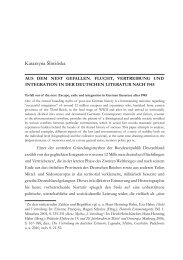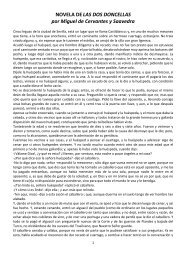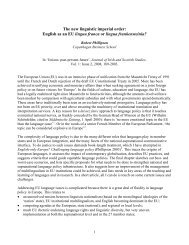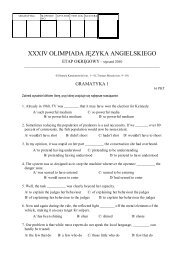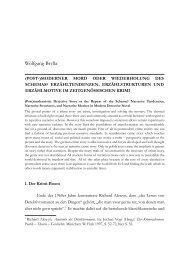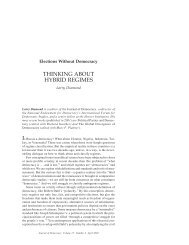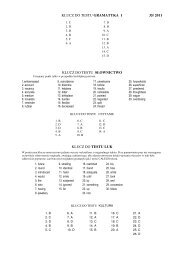R9 EXTRA YAGMUR Emerging multilingualism in urban Europe.pdf
R9 EXTRA YAGMUR Emerging multilingualism in urban Europe.pdf
R9 EXTRA YAGMUR Emerging multilingualism in urban Europe.pdf
You also want an ePaper? Increase the reach of your titles
YUMPU automatically turns print PDFs into web optimized ePapers that Google loves.
24 G. Extra and K. Yagmurof assimilation focuses on unilateral tasks of newcomers, the concept ofmulticulturalism focuses on multilateral tasks for all <strong>in</strong>habitants <strong>in</strong> chang<strong>in</strong>gsocieties. In practice, established majority groups often make strongdemands on IM groups to assimilate and are commonly very reluctantto promote or even accept the notion of cultural diversity as a determ<strong>in</strong><strong>in</strong>gcharacteristic of an <strong>in</strong>creas<strong>in</strong>gly multicultural environment.It is <strong>in</strong>terest<strong>in</strong>g to compare the underly<strong>in</strong>g assumptions of ‘‘<strong>in</strong>tegration’’<strong>in</strong> the <strong>Europe</strong>an public discourse on IM groups at the national levelwith assumptions at the level of crossnational cooperation and legislation.In the latter context, <strong>Europe</strong>an politicians are eager to stress the importanceof a proper balance between the loss and the ma<strong>in</strong>tenance of‘‘national’’ norms and values. A prime concern <strong>in</strong> the public debate onsuch norms and values is cultural and l<strong>in</strong>guistic diversity, ma<strong>in</strong>ly <strong>in</strong> termsof the national languages of the EU. National languages are often referredto as core values of cultural identity. Paradoxically, <strong>in</strong> the samepublic discourse, IM languages and cultures are commonly conceived ofas sources of problems and deficits and as obstacles to <strong>in</strong>tegration, whilenational languages and cultures <strong>in</strong> an expand<strong>in</strong>g EU are regarded assources of enrichment and as prerequisites for <strong>in</strong>tegration.The public discourse on the <strong>in</strong>tegration of IM groups <strong>in</strong> terms of assimilationversus multiculturalism can also be noticed <strong>in</strong> the doma<strong>in</strong> of education.Due to a grow<strong>in</strong>g <strong>in</strong>flux of IM pupils, schools are faced with thechallenge of adapt<strong>in</strong>g their curricula to this trend. The pattern of modificationmay be <strong>in</strong>spired by a strong and unilateral emphasis on learn<strong>in</strong>g(<strong>in</strong>) the language of the majority of society, given the significance of thislanguage for success <strong>in</strong> school and on the labor market, or by the awarenessthat the response to emerg<strong>in</strong>g multicultural school populations cannotbe reduced to monol<strong>in</strong>gual education programm<strong>in</strong>g (Gogol<strong>in</strong> 1994).In the former case, the focus is on learn<strong>in</strong>g (<strong>in</strong>) the national language asa second language only, <strong>in</strong> the latter case, on o¤er<strong>in</strong>g more languages <strong>in</strong>the school curriculum.4. The need for empirical data on <strong>multil<strong>in</strong>gualism</strong>Given the overwhelm<strong>in</strong>g focus on ma<strong>in</strong>stream language acquisition byIM groups, there is much less evidence of the status and use of IM languagesacross <strong>Europe</strong>. In contrast to RM languages, IM languages haveno established status <strong>in</strong> terms of period and area of residence. Obviously,typological di¤erences between IM languages across EU member statesdo exist, e.g., <strong>in</strong> terms of the status of IM languages as EU languages ornon-EU languages, or as languages of formerly colonialized source


